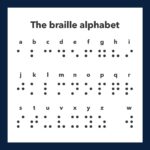Learning a new language can be an enriching experience, opening doors to new cultures and opportunities. However, not all languages are created equal when it comes to ease of learning, especially for native English speakers. While some languages may flow naturally, others present significant hurdles due to vast differences in grammar, pronunciation, and writing systems. For those seeking a real linguistic challenge, or perhaps just curious about the Mount Everests of language acquisition, let’s explore the Top 5 Hardest Languages To Learn for English speakers.
These languages, often cited by linguists and language learning experts, require significant time, dedication, and a shift in linguistic thinking. They are not for the faint of heart, but conquering them offers immense satisfaction and a truly global perspective.
1. Mandarin Chinese
Mandarin consistently tops the lists of hardest languages, and for good reason. As the most spoken language in the world, with 70% of the Chinese population using it, its complexity lies in several key areas. Firstly, Mandarin is a tonal language. This means that the meaning of a word can completely change based on the tone in which it is spoken. The classic example is ‘ma’, which, depending on the tone, can mean ‘mother,’ ‘fiber,’ ‘horse,’ or ‘curse.’
Beyond tones, Mandarin is rich in homophones, words that sound alike but have different meanings, further complicating comprehension. The writing system, using thousands of characters (Kanji), is another significant challenge, demanding rote memorization and a completely different approach from the Roman alphabet. Finally, the extensive use of idioms and aphorisms, rooted in centuries of Chinese history and culture, adds layers of nuance that are difficult for non-native speakers to grasp.
2. Arabic
Spoken across North Africa and the Middle East, Arabic is the official language in 22 sovereign states and boasts over 25 distinct dialects. This dialectal variation alone can be daunting, as the Arabic spoken in one region can be significantly different from another. Furthermore, Arabic script is written from right to left, a stark contrast to English and most European languages, requiring a complete reorientation of reading habits.
 Example of Arabic script showing different letter forms
Example of Arabic script showing different letter forms
The Arabic alphabet also presents unique challenges. Most letters have four different forms depending on their position in a word (beginning, middle, end, or stand-alone), demanding careful attention to visual detail. While Modern Standard Arabic (MSA) provides a standardized form for writing and formal speech, everyday communication often relies on dialects, adding another layer of complexity for learners.
3. Japanese
Japanese, another Asian language on our list, presents its own unique set of difficulties. While grammatically distinct, one of the major hurdles for English speakers is the intricate writing system. Instead of one alphabet, Japanese utilizes three: hiragana, katakana, and kanji. Hiragana and katakana are phonetic alphabets, but Kanji characters, borrowed from Chinese, represent entire words or concepts, and there are thousands to learn.
Mastering these three writing systems is a significant undertaking. Furthermore, Japanese grammar, while not having grammatical genders, is structured very differently from English. Word order, sentence particles, and honorific levels all contribute to the complexity. The concept of politeness levels, which dictates different forms of speech depending on social context and relationships, is also a crucial aspect that English speakers must learn to navigate.
4. Hungarian
Hungarian stands out amongst European languages as particularly challenging for English speakers. Unlike many Indo-European languages, Hungarian belongs to the Uralic family, meaning it shares very little vocabulary or grammatical structure with English. Hungarian grammar is highly agglutinative, relying heavily on suffixes to indicate grammatical relationships rather than word order. With over 18 cases, the subtle nuances conveyed by these suffixes can be difficult to master.
Pronunciation also poses a challenge. Hungarian features a range of vowel sounds, including 14 distinct vowels, some of which are unfamiliar to English speakers. Furthermore, Hungarian culture is rich in idioms and expressions that are deeply embedded in the language, requiring cultural understanding to fully grasp their meaning.
5. Korean
Korean, often described as a language isolate with no known genealogical relationship to other languages, presents a unique learning curve. While the Korean alphabet, Hangul, is considered relatively logical and phonetic, the grammar and sentence structure differ significantly from English. Korean word order typically follows subject-object-verb, a reversal of the subject-verb-object order common in English.
Formality levels are also crucial in Korean. The language employs a hierarchical system with very informal, informal, and formal speech levels, dictated by age, social status, and familiarity. Navigating these levels correctly is essential for appropriate communication. While Hangul itself is praised for its simplicity and phonetic nature, mastering Korean vocabulary, grammar, and cultural nuances makes it a formidable language for English speakers to learn.
While these top 5 hardest languages present significant challenges, they are by no means insurmountable. With dedication, the right resources, and a willingness to embrace linguistic differences, English speakers can successfully learn these languages and unlock a world of new possibilities.
